Paper patched or lubricated lead bullets can be swaged in two basic styles, the SWC shoulder style shown here, and the smooth ogive style shown below. The SWC style can be done in a single die, and therefore costs less for equipment and in time of production. The smooth ogive style is generally made in two steps, in two different kinds of dies. The first die has a cylindrical cavity, and can be the LSWC-1 or the CSW-1, both of which are functionally identical except the LSWC-1 generally has a nose and base punch that can form a SWC bullet, whereas the CSW-1 normally has just flat punches for making the lead slug or core. The second die has a cavity shaped like the bullet, and uses an internal punch only to push the bullet back out by its tip. The second die is called a PF-1 or point form die.

Paper Patch/Blackpowder BulletsGrease Grooves - * - Base Guards - * - Production Knurling - * - Big Slugs |
|
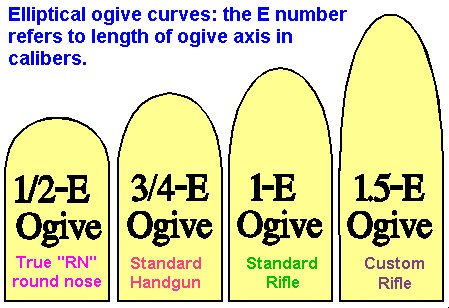 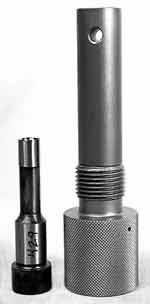 LSWC-1 Dies LSWC-1 DiesThe LSWC-1-H is shown at the left (with external and internal punch). There is no major disadvantage to the shouldered or SWC style of bullet for short to medium range (100-300 yards). Many people prefer it to the smooth ogive type of bullet because the shoulder helps hold the paper patch from sliding back, if you overlap the edge slightly and use your thumbnail to crimp the edge of the paper over the shoulder. The shoulder width is typically in the range of .015 to .020 inches. It is made necessary by the edge of the punch which forms the nose, in the LSWC-1 die. Making this edge thinner results in the punch wall becoming too weak to withstand the stress of moving the punch while under 30,000 psi or more pressure, so the edge of the punch simply breaks off or the punch cracks lengthwise. Making the punch edge at least .015 to .020 inches wide eliminates the problem. Very long range matches are best shot with the smooth ogive bullet, because this kind of bullet has slightly less drag and shoots somewhat flatter at long range.  Another beneficial feature you can add to your lead bullet is the Base Guard(tm) disk. This copper disk scrapes fouling out with each shot, unlike the old-fashioned gas check, which simply irons over any fouling left in the bore. Base Guard disks attach to the base of the bullet when you form the bullet, all in one stroke. The disk has a small hole in the center. You use a BG base punch, which has a matching but larger round depression, and the lead flows through the hole in the disk and makes a rivet head in the punch depression. Another beneficial feature you can add to your lead bullet is the Base Guard(tm) disk. This copper disk scrapes fouling out with each shot, unlike the old-fashioned gas check, which simply irons over any fouling left in the bore. Base Guard disks attach to the base of the bullet when you form the bullet, all in one stroke. The disk has a small hole in the center. You use a BG base punch, which has a matching but larger round depression, and the lead flows through the hole in the disk and makes a rivet head in the punch depression.Now the Base Guard disk can turn, under pressure, on the axel created, so it tracks the rifling and maintains a good gas seal even if the bullet wants to skid or slip across the rifling. The BG disk is created with a conical shape, which flattens and allows the disk to grow when you swage the bullet. This insures that the disk comes exactly to the die walls, the same diameter as the bullet, for a zero tolerance perfect match. (A flat washer would vary slightly in diamter depending on manufacturing tolerances, which is why the old zinc based washer bullets had hit and miss success, depending on the exact size of the washer...even .001 inch difference is too much at 30,000 psi or higher, and gas would leak around them to melt the lead.) Unfortunately, BG's are not always allowed in certain kinds of matches, so check the rules. 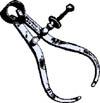 For hunting, and in matches where they are allowed, they help clean the bore of fouling with each shot fired. Some people even use them as fouling remover bullets in matches where they are not permitted for target scoring purposes. BG bullets do not require lubrication, in most cases. Even dead soft lead .44 Magnum bullets at full loads have been used without a bit of lubricant, with bores just about as clean after a match as they were before (using smokeless powder). With blackpowder, the disks work very well as long as the bore was clean when starting, and of course the last bullet fired still is followed by a charge of fouling, so all it can clean is the fouling from the previous shots, not the last one. For hunting, and in matches where they are allowed, they help clean the bore of fouling with each shot fired. Some people even use them as fouling remover bullets in matches where they are not permitted for target scoring purposes. BG bullets do not require lubrication, in most cases. Even dead soft lead .44 Magnum bullets at full loads have been used without a bit of lubricant, with bores just about as clean after a match as they were before (using smokeless powder). With blackpowder, the disks work very well as long as the bore was clean when starting, and of course the last bullet fired still is followed by a charge of fouling, so all it can clean is the fouling from the previous shots, not the last one. BG disks are available from Corbin in bags of 1000, at considerably less than three cents each. Or you can make them using various models of Corbin BGK-1 base guard maker kits. Knurling should NOT be used with a BG bullet, as it might damage the gas seal on the disk edge. Grooves and lube are OK, but might not be necessary...save time by trying the disks by themselves, first, and only lube if you still have too much fouling. About 8 out of 10 guns work perfectly with soft lead and no lubricant, if the bullet is the right diameter to seal the bore. Some guns have either rougher bores, or the barrel has loose and tight places where gas gets around the seal...these may not work well with a BG disk. The odds are good, and the benefit is so high, that it is worth investigating. BG disks are available from Corbin in bags of 1000, at considerably less than three cents each. Or you can make them using various models of Corbin BGK-1 base guard maker kits. Knurling should NOT be used with a BG bullet, as it might damage the gas seal on the disk edge. Grooves and lube are OK, but might not be necessary...save time by trying the disks by themselves, first, and only lube if you still have too much fouling. About 8 out of 10 guns work perfectly with soft lead and no lubricant, if the bullet is the right diameter to seal the bore. Some guns have either rougher bores, or the barrel has loose and tight places where gas gets around the seal...these may not work well with a BG disk. The odds are good, and the benefit is so high, that it is worth investigating. |
|
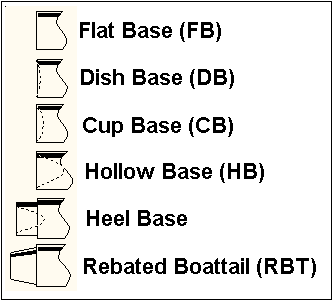 Paper-patched bullet design software is available from Corbin, as well as software that calculates multiple density, multi-part bullet weights and volumes, calculates bullet air resistance and BC, and helps you determine the bullet diameter for a given rifling depth and paper thickness. But a good rule of thumb is this:
|
|
|
|
Start writing here...
 BG disks are available from Corbin in bags of 1000, at considerably less than three cents each. Or you can make them using various models of Corbin BGK-1 base guard maker kits. Knurling should NOT be used with a BG bullet, as it might damage the gas seal on the disk edge. Grooves and lube are OK, but might not be necessary...save time by trying the disks by themselves, first, and only lube if you still have too much fouling. About 8 out of 10 guns work perfectly with soft lead and no lubricant, if the bullet is the right diameter to seal the bore. Some guns have either rougher bores, or the barrel has loose and tight places where gas gets around the seal...these may not work well with a BG disk. The odds are good, and the benefit is so high, that it is worth investigating.
BG disks are available from Corbin in bags of 1000, at considerably less than three cents each. Or you can make them using various models of Corbin BGK-1 base guard maker kits. Knurling should NOT be used with a BG bullet, as it might damage the gas seal on the disk edge. Grooves and lube are OK, but might not be necessary...save time by trying the disks by themselves, first, and only lube if you still have too much fouling. About 8 out of 10 guns work perfectly with soft lead and no lubricant, if the bullet is the right diameter to seal the bore. Some guns have either rougher bores, or the barrel has loose and tight places where gas gets around the seal...these may not work well with a BG disk. The odds are good, and the benefit is so high, that it is worth investigating.

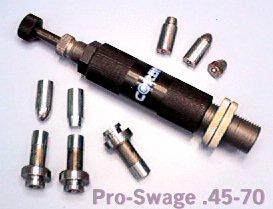
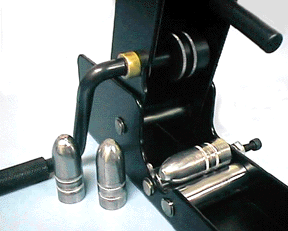
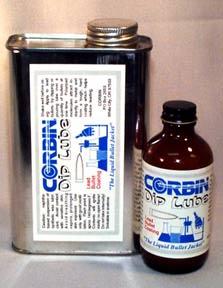


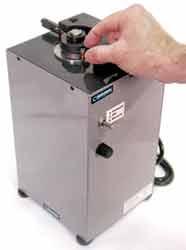
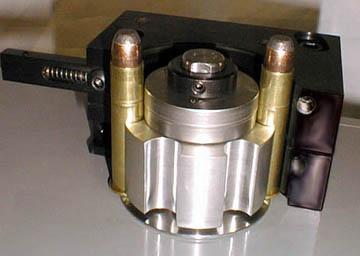
About Corbin Paper Patch/Blackpowder Bullets